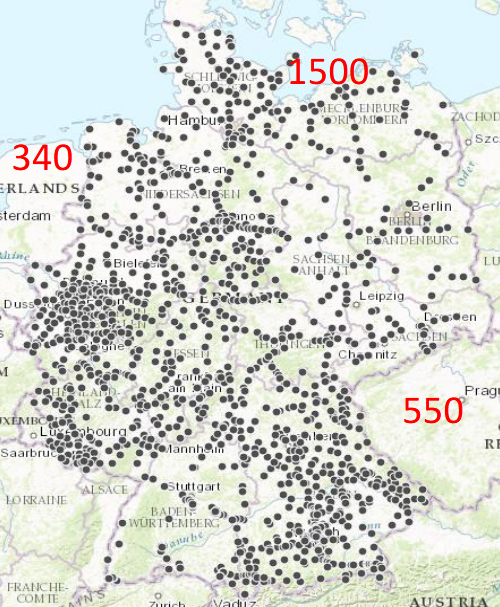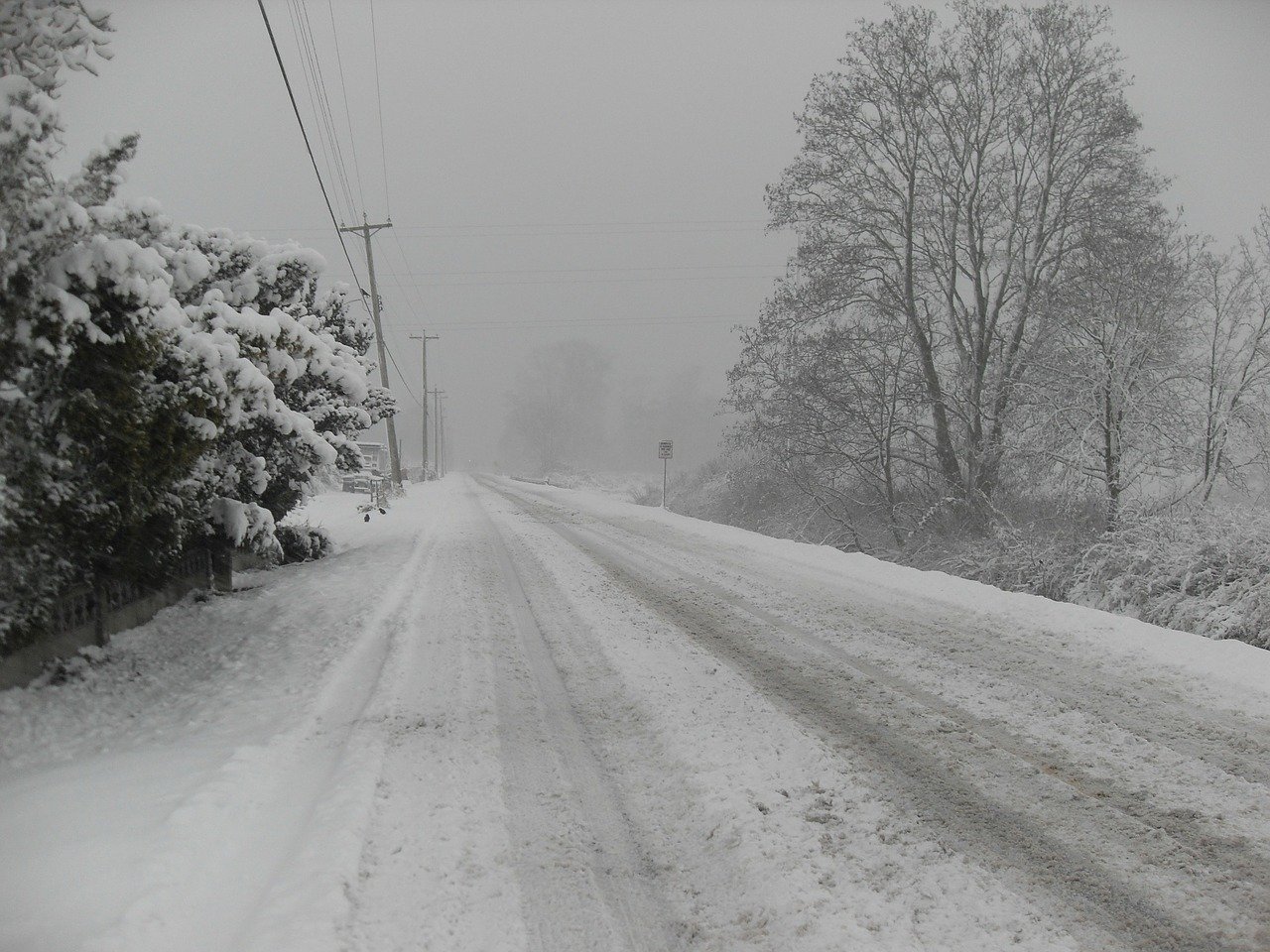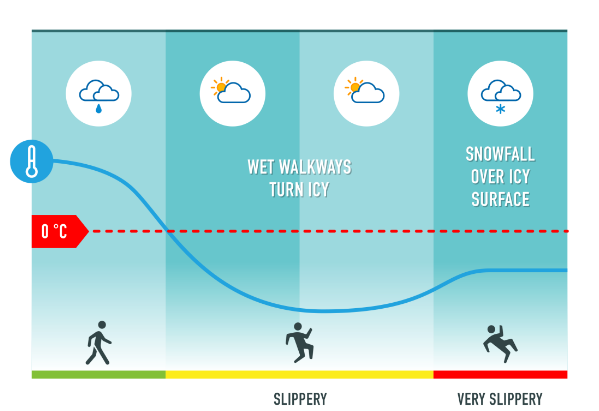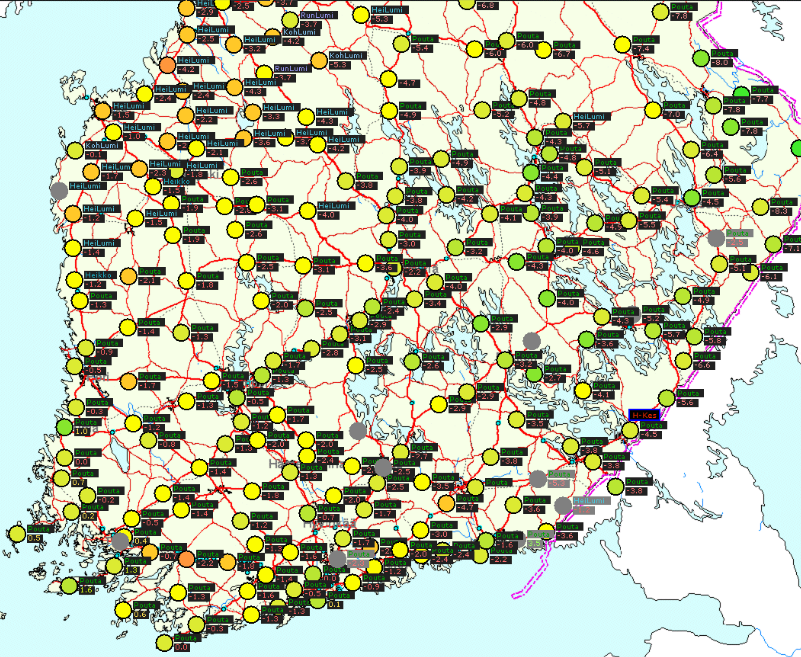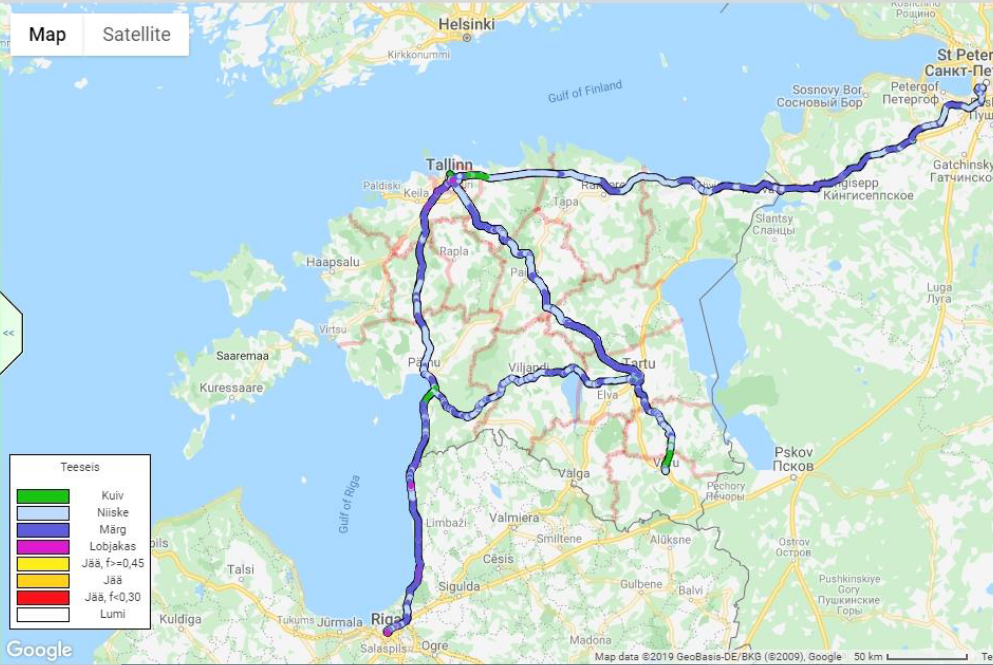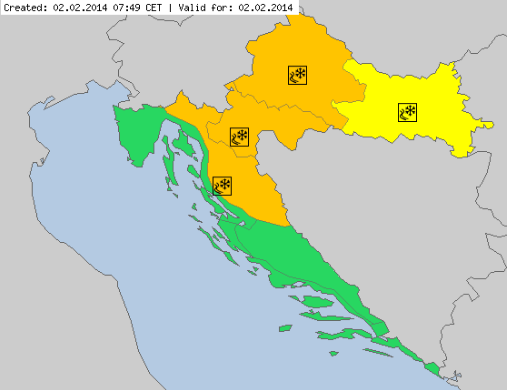Weather
Elina Tuhkalainen treats the formation and dissipation of fog at airports in Finland.
Length: 35 min
Author: Elina Tuhkalainen (FMI)
In this presentation formation and dissipation of fog and stratus will be treated. The presenters will also address how these phenomena occur around the year and how they affect the services at the airports in Finland.
Ralf Schmitz gives a short overview about how the German weather service supports land transport service.
Length: 19 minutes.
The lecture will give a short overview about how the German weather service support land transport service. Main focus is to show results of the new backend containing MOS trained weather forecasts at the 1500 German Street Weather Stations (SWS) and forecasts of the street model METRo at this stations. Results will be presented at a Frontend system which will be replaced by a new modern system as well as the new Backend System.
The presentation shows a possibility of turbulence diagnostics with aid of the Turbulence Kinetic Energy (TKE).
Length: 50 min
Author: André Simon, Péter Salavec (OMSZ)
Turbulence is a hazardous weather phenomenon for aviation and a challenge for a forecaster. It is typically a small-scale phenomenon and its direct observations and measurements are relatively sparse, except of the surface layer of the atmosphere. The presentation shows a possibility of turbulence diagnostics with aid of the Turbulence Kinetic Energy (TKE) calculated from a high-resolution non-hydrostatic model AROME. This parameter is calculated from a prognostic equation and it is only rarely applied as an end-product in operational forecasting. We studied the distribution of TKE in various meteorological situations, with focus on the Visual Flight Rules (VFR) conditions. Both advantages and limits of the TKE diagnostics are discussed. High attention is also given to forecasting of mountain waves, which can have both positive and negative impact on the flight. A development work based on this theory is in progress at the Unit of Aviation Meteorology resulting in new products for the mountain wave gliding branch of sport aviation.
Geir Ottar Fagerlid presents the upgraded Norwegian road weather warning system, focussing on precipitation and wind.
Length: 28 minutes.
Driving and road weather in Norway can be demanding all year around, not just because of the subarctic location, but also because of the complex terrain, from deep fjords to high mountains. The Norwegian Meteorological Institute have recently upgraded its road weather warning system, focusing on precipitation and wind.
Kris Bedka talks about methods helping to detect hazardous weather situations for aviation.
Length: 30 min
Author: Kris Bedka (NASA)
Current generation geostationary satellites are observing convection that is hazardous to aviation at increasingly high spatio-temporal detail. In recent years, commercial and research aircraft have collected automated turbulence and cloud ice water content observations that can be used to better understand exactly where within deep convection the turbulence and icing conditions are typically occurring. Ground-based weather radar and severe weather reports also identify locations of hail, downburst wind, and tornadoes. Research conducted at NASA Langley Research Center (LaRC), in collaboration with a number of U.S. and international partners, has resulted in geostationary-based analyses and automated detection algorithms that can denote where turbulence, icing, and severe weather conditions are likely. These methods are applicable to any geostationary visible and IR imager across the globe and therefore can be used to map these weather hazards in nearreal time, a capability that is especially valuable over regions without weather radars and other conventional observations of aviation hazards.
Alexander Jann and Andreas Wirth present the new aviation products of ASII-NG (Next Generation).
Length: 30 min
Author: Alexander Jann, Andreas Wirth (ZAMG)
Two new satellite-derived products related to turbulence analysis have been developed recently in the frame of the Nowcasting-SAF. The first product (ASII-GW”Automatic Satellite Image Interpretation – Gravity Waves”) objectively detects grating patterns in the water vapor 7.3 imagery which point to the presence of gravity waves. The second product (ASII-TF “Automatic Satellite Image Interpretation – Tropopause Folding”) identifies the location of tropopause folds from satellite and NWP data. The algorithm is based on the logistic regression method.
In this presentation, we will talk about the selected algorithms and present cases from the official Nowcasting-SAF validation reports (to be released shortly) to illustrate the product performance.
Marjo Hippi presents a numerical model developed at FMI that simulates the level of slipperiness on the side-walks.
Length: 30 minutes.
The Finnish Meteorological Institute (FMI) has developed a numerical weather model that simulates the level of slipperiness on the sidewalks. The model classifies the expected sidewalk slipperiness into three classes; normal, slippery and very slippery. Normal means that there is not ice or snow on the surface. FMI is giving warnings if very slippery sidewalk condition is expected. During very slippery sidewalk condition normal walking is difficult for everyone and extra attention must be paid off when walking.
Icy and snowy sidewalks are very typical phenomena in Finland during winter. Slipperiness due to ice and snow on sidewalks increases the risk of pedestrians' injuries. Almost every second person slips annually in Finland and around 50 000 persons (1 % of Finnish population) are injured and need medical attention. Slip injuries are a big problem causing economic losses and long sick leaves. Emergency departments are crowded during the most slippery days. FMI's warnings for slippery pedestrians' sidewalk condition is one way to improve the safety among the pedestrians and add awareness of slipperiness. Pedestrians may reserve more time for travelling, choose the way of travelling or use anti-slip devices if very slippery pavement condition is forecasted.
Peter Schmitt analyses the different aspects of CAT and presents a CAT forecasting method.
Length: 40 min
Author: Peter Schmitt (DWD)
Clear air turbulence (CAT) is the term for medium- or high-level turbulence in regions with significant wind shear. CAT is an important factor for the aviation safety.
In the first part of the presentation, I will show you typical parts of CAT in relation with the 300 hPa geopotential analysis. Furthermore you get an overview to the correlation between CAT and characteristic cloud patterns in satellite images. In many cases satellite images provide the first clue or a confirmation for the presence auf CAT.
The second part is dedicated the forecast of CAT in Deutscher Wetterdienst (DWD) with the ICON model. DWD has been applying a forecast method based on Eddy Dissipation Rate (EDR). This real property of atmospheric turbulence is the main sink term of Turbulent Kinetic Energy. In a case study you will see the typical working process in practice with consideration of the model output, typical cloud pattern in satellite image and the use of the conceptual model and the structure of geopotential field.
Janne Miettinen describes the cooperation between the private company Destia and the national weather service for road maintenance.
Length: 36 minutes.
FMI provides road weather forecasts for all road maintenance companies in Finland that provide maintenance operations for the state. The service is defined by the Finnish Transport Agency, which services and products are included and what are the ways they are delivered.
Addition to this FMI has had a long Public-Private-Partnership (PPP) with the biggest maintenance company in Finland called Destia. At FMI's weather center Destia’s road maintenance supervisors have worked side by side with FMI’s meteorologists for 17 winters. This procedure has been found fruitful for both parties so that we can support each other on road weather related issues. FMI has developed several applications by itself and together with Destia to help operating the maintenance work.
Ab Maas shows which items are of main importance for balloon forecast e.g. accurate wind forecasts, starting and dying out of thermals and convection.
Length: 60 min
Author: Ab Maas (former KNMI)
Aviation meteorology is a wide field in terms of forecasting and forecasting product. Not only is there a big difference between the civil aviation part and General Aviation (GA), but also in GA there are a lot of specific customers who needs specific forecasts; VFR forecasts for small planes, gliding, paragliding, ultra-lights, ballooning etc.
Ballooning forecasts can also differ, e.g. the commercial balloonists need other forecasts than balloonists in competitions and championships and gas balloons can fly in weather circumstances where it is impossible for hot air balloons.
In the presentation it will be shown which items are of main importance for balloon forecast e.g. accurate wind forecasts, starting and dying out of thermals and convection. And also how surface observations, radio soundings, satellite and radar can be of help.
Märt Puust gives an overview on the 4 models used for road weather forecast in Estonia.
Length: 50 minutes.
Since 2016 Teede Tehnokeskus, the state owned road research and consultancy company provides winter road weather information service together with the Estonian Environment Agency (EEA) for all national roads, maintenance companies and Estonian Road Administration. The main service providing tool is a TIK web service https://tik.teeilm.ee/en which includes all essential information for decision making.
Beside the official road weather forecast provided by EEA the service includes also alternative road weather forecasts which are based on regional weather models from Finland, Sweden and Norway and Teede Tehnokeskus own METRo origin road weather model. These four models have been in operation for three winters and a special tool for model comparison and verification has been developed. The presentation gives an overview of the system's architecture and highlights some experiences in integration of Open Data of different sources and createsnew value in relatively large scale.
Lovro Kalin focusses on the prediction of freezing rain as an essential factor in road weather forecast.
Length: 26 minutes.
Freezing rain is a relatively complex phenomenon, with rare occurrence but often related to serious damages and threats. With only few tools available, it has always been a strong challenge for the operational forecasters - in terms of appearance, intensity and impacts. Croatia - as well as Slovenia and Hungary - experienced an extreme and disastrous event in winter 2014, with several hundreds million Euro damage, and temporal collapse of the traffic and energy system.
This paper presents recent developments and experiences in freezing rain operational forecasting. A major tool used recently is the new 'precipitation type' product provided by ECMWF, and so far with overall very good performance. It is accompanied by other diagnostic tools defined in the Croatian Hydrological and Meteorological Service. Several recent cases will be presented, and experiences and forecast performance will be discussed.


